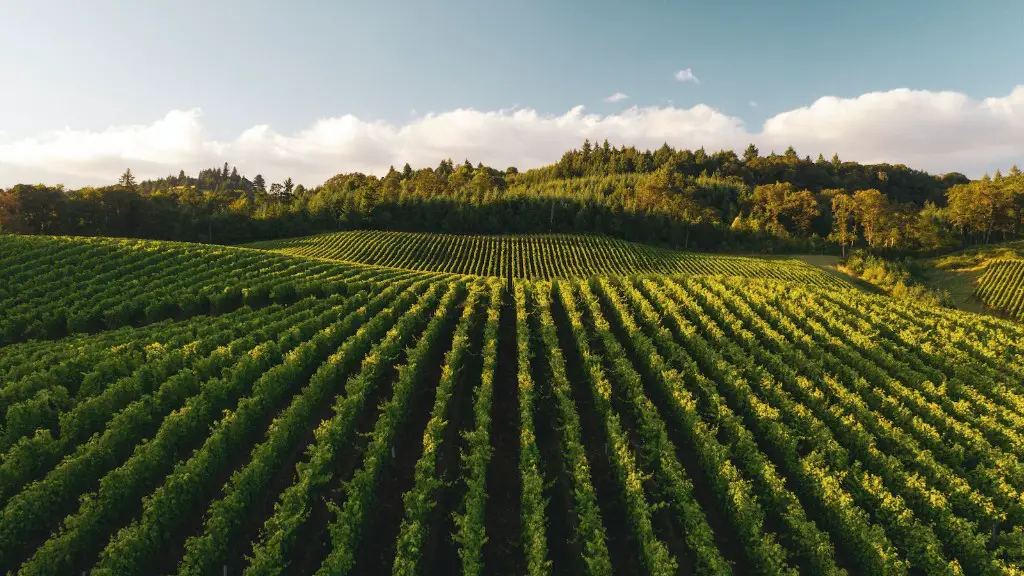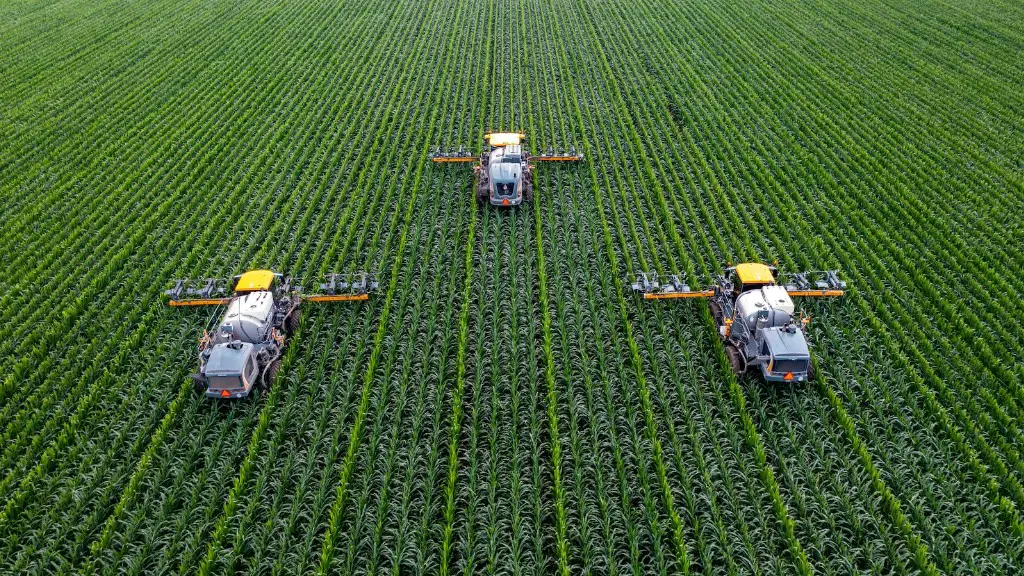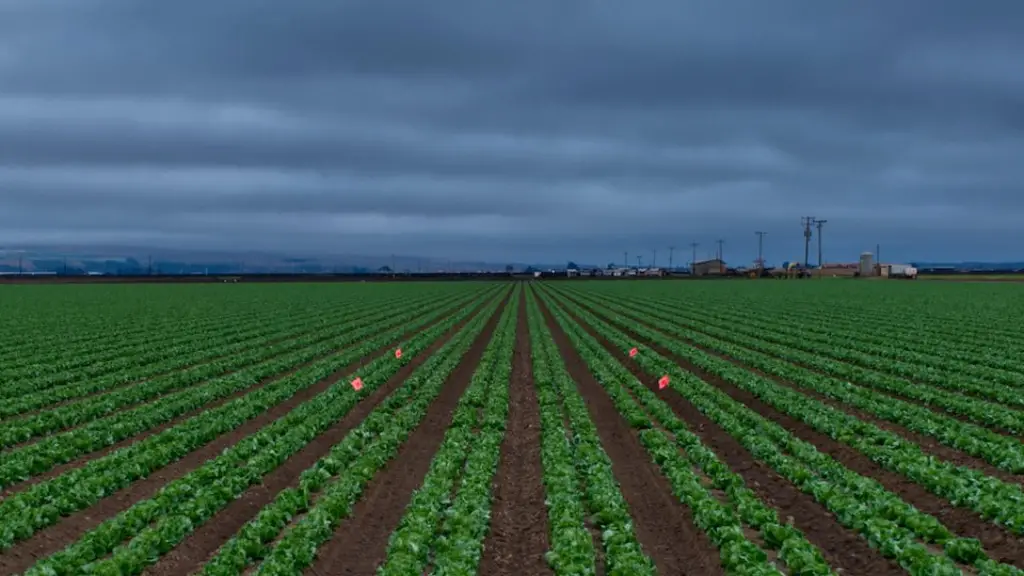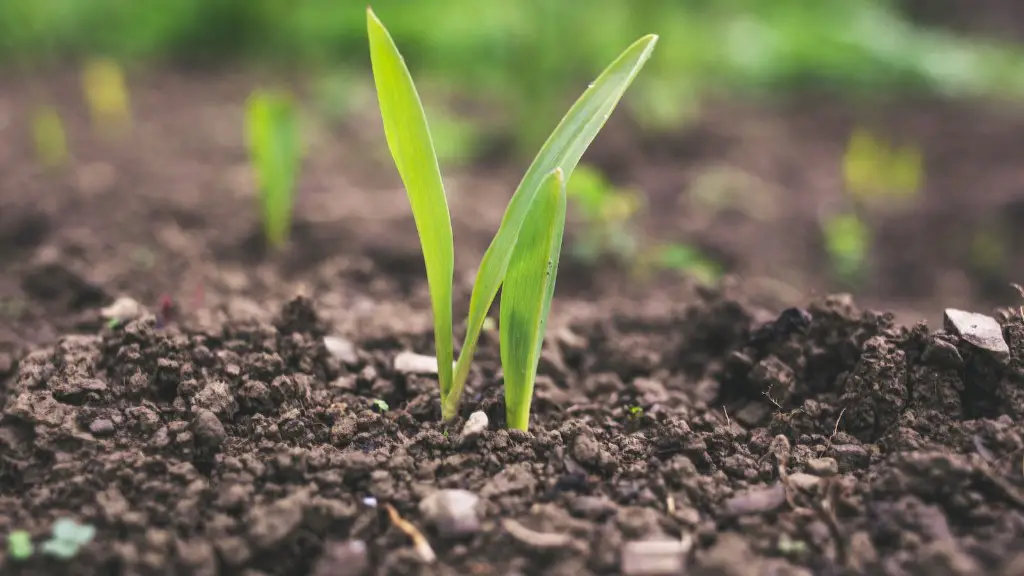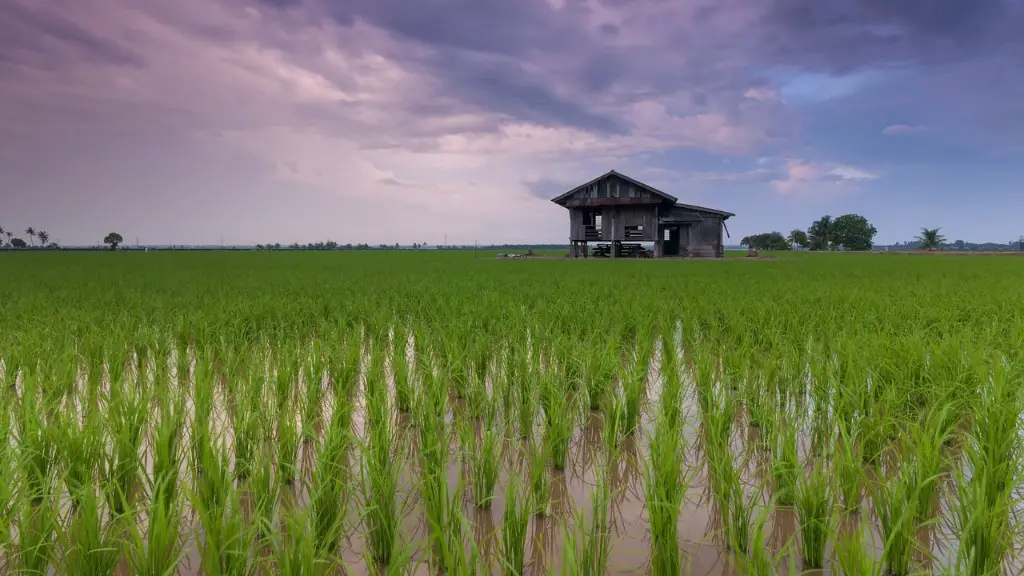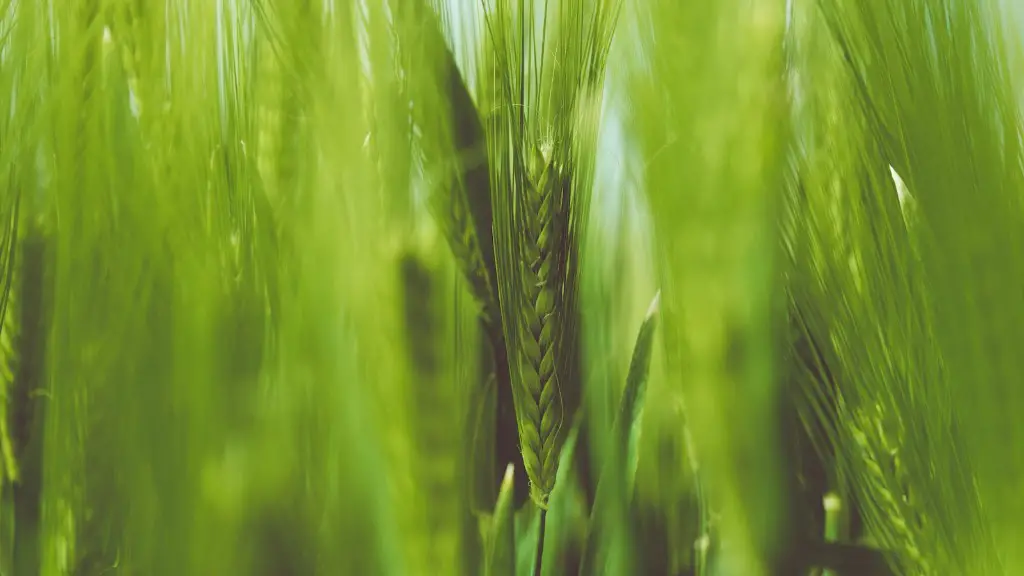Yield, in agriculture, is the amount of product produced from a given area. It is an important measure that can help farmers and agriculturalists to assess and plan for their output in the future. Calculating yield can be a complex task, but with the right approach, it can be made straightforward. Here are some steps to help you calculate yield in agriculture.
First, identify and measure the area in question. When calculating yield, it is important to obtain the exact area that is being measured. This can be done using traditional measurements such as using a ruler, or with the help of a satellite image.
Second, determine which crop is being grown. The type of crop matters, as different crops yield different amounts and require different levels of resources to grow.
Third, estimate the crop yield. This can be done with the help of a yield calculator, or by consulting a knowledgeable expert. When estimating yield, one must take into account such factors as fertility, crop type, weather, environment, pests, and other extraneous factors.
Fourth, multiply the estimated yield with the area being measured. This should give a rough idea of the total yield of the crop in a given area.
Fifth, obtain the price of the crop per unit. With the exact amount of yield and unit price known, the total profit or loss of the crop can be calculated.
Lastly, compare the total yield between different areas, crops, or other factors as required. This can help in deciding which areas or crops are more profitable and efficient than others.
Fertilizer Considerations
When calculating yield, it is often necessary to factor in the use of fertilizers. Fertilizers can help to boost the yield of crops, though this is dependent upon the type of plant, the soil type, and the amount of fertilizer applied. Therefore, the cost and availability of the fertilizer must be taken into account when making the calculations. Knowing the nutrient content of the fertilizer is also essential, as different nutrients will provide different benefits in terms of yield.
Excessive use of fertilizer must be avoided, as this can cause negative effects on the environment. Over fertilizer application can also damage plants, reduce the flower’s quality, reduce yield, or even kill plants. Therefore, the right ratio of fertilizer to plant must be determined beforehand to ensure optimum yield and minimal damage.
In addition, when considering fertilizer, one must consider the method in which it is applied. For instance, the fertilizer can be applied to the leaves, the roots, or both. Applying fertilizer to the leaves can provide quick and instant results, though it is a more costly approach. Fertilizing the root provides sustained nutrition, which can help to consistently strengthen the plant and boost its yield over time.
Finally, it is also important to take into account the environmental effects of fertilizers, such as the run-off into waterways. To minimize these, it is important to obtain fertilizer that is environmentally friendly, such as organic or slow-release fertilizer.
Weather, Temperature, and Irrigation
Weather, temperature and irrigation are important factors that can have a significant impact on crop yield. As such, they should be considered when calculating the expected yield. Temperature plays a major role in the growth of plants, and too much or too little can cause havoc to the growth of the crop. High temperatures, especially in hot climates, can cause the plants to stress and even die. Therefore, farmers and agriculturalists need to ensure that their crops are regularly watered, and have sufficient shade when temperatures are high.
On the other hand, too little water will also cause a decrease in yield, as the crops will not be receiving the nutrients and moisture that it requires for growth. Therefore, irrigation systems must be in place for crops that are not receiving sufficient water from rainfall.
The type of irrigation system is important, as different crops require different systems. For instance, sprinkler systems are typically used for larger areas, whereas drip irrigation systems are more suitable for smaller areas with drought-prone soils. The efficiency of these systems should also be taken into account – for example, an inefficient system can waste a lot of water, leading to an overall decrease in yield.
Different crops also require different amounts of water – some may need more frequent but light waterings, while others may need heavier but less frequent waterings. Knowing the right amount and frequency of water to give to crops is important in achieving the desired yield.
Finally, the weather can have a significant effect on crop yield. Too much or too little rain can have disastrous effects. In such cases, it is important to collect data regarding climate and soil in order to obtain the best yield in a given area.
Harvesting and Storage
Harvesting and storage are important aspects of calculating yield, as it can influence the quality and quantity of the yield. It is important to know when to harvest, as some crops require different harvest times. For instance, some crops are best harvested when their leaves are young, whilst others may require a later harvest.
The harvesting techniques used are also important. Some techniques can cause the crop to spoil, while others won’t. It is also essential to consider the parts of the crop that need to be harvested, as some crops may only need certain parts harvested. For example, some plants may need only their leaves harvest, whilst some will require their entire stalk.
Storage is also a key element in ensuring maximum yield. Different products require different storage conditions. For instance, some products require cold storage, whilst others might require a dry and cool storage environment. Furthermore, the storage duration should also be taken into account, as prolonged storage can reduce the yield.
Finally, the storage conditions for the product should also be factored in. Storing the product in a temperature and humidity-controlled environment is important, as some products may require a high humidity environment and some may require a low humidity environment.
Pest Control
Calculating yield also involves controlling pests. Pests are a common problem in crop production, as they can damage the crops and reduce the yield. Therefore, pest control measures must be taken to prevent them from occurring. Pesticides can be used to kill pests, though they must be used with caution to avoid harming other organisms, such as bees or birds.
However, it is also important to know which pests need to be controlled, as not all of them may be detrimental to the crop. In fact, some organisms, such as ladybugs, can be beneficial for crop yield, as they act as predators for other pests. In such cases, it is important to leave them unharmed.
In addition, pest control practices must also be adapted due to the environment and geographical location of the crop. For instance, in wetter areas, spraying pesticides may not be appropriate, as they can be washed away by the rain. Other practices such as trapping, or manual removal of pests may be more suitable.
Finally, it is also important to consider the economic cost of pest control when attempting to increase yield. The cost of purchasing and applying pesticides may be higher than the expected yield, thus making it an unviable option in some cases. Therefore, alternative and economical pest control methods should be explored.
Soil and Plant Enhancement
The health of the soil and the plants are essential when calculating yield, as they both have a significant effect on the overall yield. The soil must be enriched with nutrients and water-retaining agents in order to sustain healthy plants. Applying compost to the soil is an ideal solution, as it helps to nourish the soil, increase fertility, and improve drainage.
Fertilizers can also be used to improve the fertility of the soil, though as mentioned earlier, one must ensure that the fertilizer is suitable and of good quality. Additionally, soil testing can provide a precise assessment of the soil conditions and help to identify potential soil deficiencies that can be addressed to improve yield.
Furthermore, the health of the plants should also be taken into consideration. This includes factors such as pruning, thinning, and positioning to ensure that the plant receives sufficient light and air. Plant health can be greatly improved by providing them with the right nutrients and pest control, along with adhering to harvesting and storage practices as previously discussed.
Finally, research can be carried out to identify plants that are more resilient to certain conditions, such as disease or drought. Introducing a new crop or variety to the region can also help to increase yield, as the pest or environment may be more suitable for the new crop.
